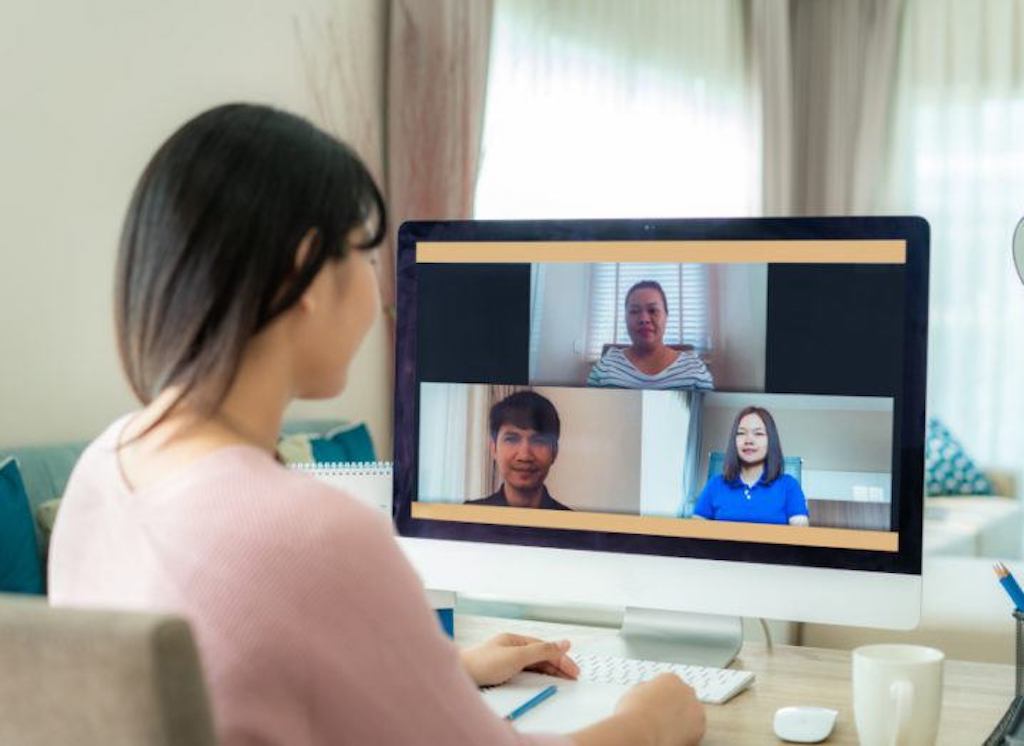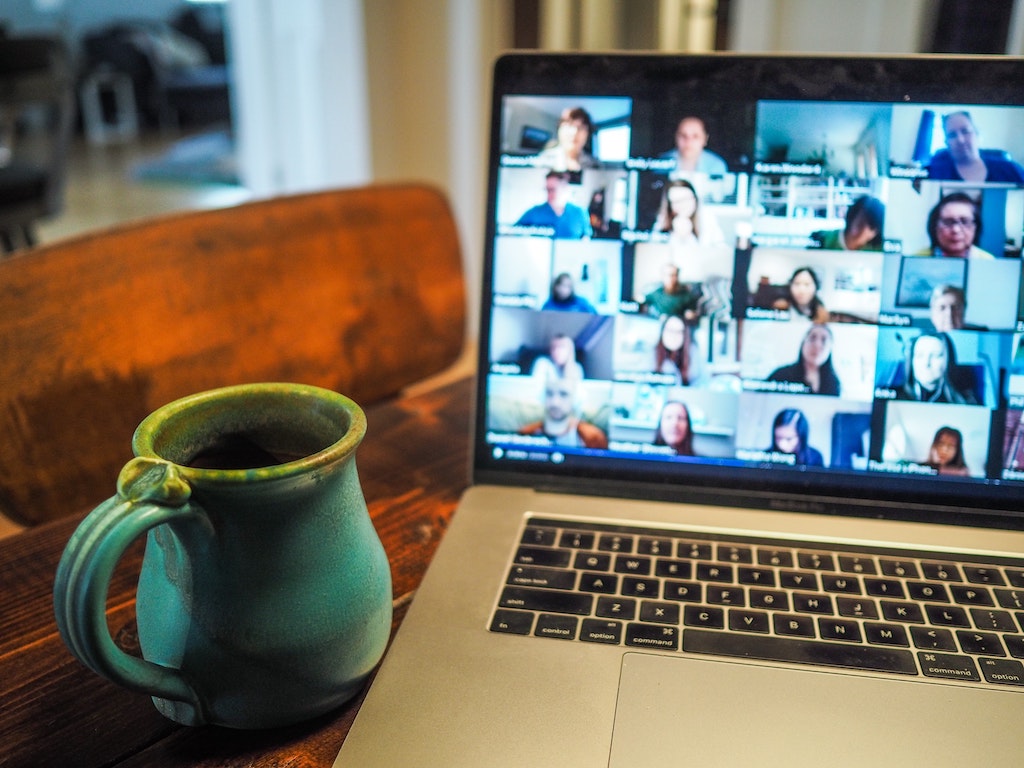5 Mins Read
If you haven’t heard of Zoom yet, then where have you been? For the past few months as the coronavirus continues to keep hundreds of millions confined to their homes, much of our time online has been spent using the video conferencing platform Zoom to communicate remotely, whether it be a work call or just to phone-in to loved ones. So much so that “Zooming” has become a common slang term and the company now counts over 300 million active users. There is no doubt that digital technology is a true lifesaver when it comes to keeping us connected in these difficult times. But another Zoom-related term has emerged, one that comes with less positive connotations – Zoom fatigue. Turns out, constant Zooming can be pretty tough on our brains, and here’s why.
What is Zoom fatigue?
Zoom fatigue is a real thing. Millions of people are now chattering about it online, referring to it as the exhaustion that comes with large doses of video-calling that has now become a part of everyday life – people are attending virtual happy hours, birthday parties, business meetings and even therapy. It’s not just about the number of hours spent on each call, but the number of people too. Nowadays, you can cram as many as 500 people into a single “Zoom room”.
While it references the Zoom app specifically, it too applies for any type of video-calling platform, from Google Hangouts to FaceTime and the good ol’ Skype, which doesn’t happen to be battling a litany of security issues like Zoom is.
Brain drain from screen communication
People might be surprised to learn that video calls are actually incredibly difficult for effective communication, given that there seems to be few obvious distractions if we’re all focused on a singular screen. But unlike in-person conversations, where the brain can draw in meanings from dozens of other non-verbal cues, typical video calls take away these entrenched communication abilities that many of us rely on.
Whether someone is turning away from you, for example, is something most of us subconsciously note down when we communicate face-to-face, or whether someone is fidgeting with their hands or about to inhale as they interrupt a conversation. These are all body language and hand gesture cues that we are missing out on during a Zoom call. Compound that with poor video quality, some of us might not even be able to figure out facial expressions and eye contact.
“For somebody who’s really dependent on those non-verbal cues, it can be a big drain not to have them,” Andrew Franklin, an assistant professor of cyberpsychology at Norfolk State University, told National Geographic. Even extroverts are likely to feel the burn and become worn down by high-intensity virtual communication.
Heightened anxiety
Psychologists, neuroscientists and computer experts have also warned that the delays inherent in video communication can make us feel (ironically) more isolated, disconnected and anxious. Some people may feel nervous knowing that they are being viewed on a screen, and seeing themselves on camera might make themselves feel even more self-conscious.
“You can experience social anxiety as a result of video calls. This is a social situation, albeit remote and digital…You may not be judged at all, but create this in your mind as if it were real,” said mental health lead for AXA PPP Healthcare, Eugene Farrell, in conversation with Stylist.
Many people are already feeling more anxious than usual too, given the uncertainty of the pandemic. Fears and concerns about Covid-19 can take an emotional toll – we’re now scrolling through depressing news stories day after day and some are feeling extra worried about friends and family or struggling with external events such as job losses or salary cuts as a result of the coronavirus impact.

Video calls take a physical toll
It isn’t just about the mental exhaustion we feel from Zoom calls. Part of it is physical – our bodies are now spending more time sitting down in front of a screen, and oftentimes, we’re sitting with incorrect posture on unergonomic furniture that can lead to back pains, spinal misalignment and headaches. This can leave us feeling more tense, achy and cranky than usual, and as a result, we might end up feeling more irritated and frustrated on video calls that are mentally exhausting in itself.
This can then lead to a domino-effect on our real-life interactions at home too. Anxiety, worse moods and physical aches combined with Zoom fatigue? It’s not surprising that many are now finding themselves easily triggered into an argument with family members or partners.
For some, it isn’t all bad news
The dramatic transformation into virtual calls can actually be a positive thing and has been welcomed by people who struggle with in-person communications, such as those with autism or other neurological difficulties and find face-to-face conversations overwhelming.
One account from an editor at Climate Central John Upton said that having to navigate small-talk and filler conversations in his usual conferences and meetings became a source of anxiety in his everyday life. Now that he is working from home, he feels like his source of tension has been greatly reduced.
This phenomenon has been backed by scientific evidence, with one cyberpsychology study showing that people with developmental and intellectual disabilities find it less difficult to socialise online. According to Outaouais Claude Normand, academic at the University of Quebec, the frequent lag on video calls could actually help people with autism to discern when it is their turn to speak, and when it is someone else’s.
How can we minimise Zoom fatigue?
Experts say that being unable to detect facial expressions and cues could actually be more beneficial for effective communication than faulty detection, which is common on video calls and is a part of why they are so exhausting. The absence of visual imagery could help us become more sensitive to language – what is being said, the tone of voice and even brief hesitations or pauses in sentences. Over a regular phone call, we can therefore become more hyper-aware of these cues, which makes up for the lack of body language and other indications we pick up during face-to-face interactions. Plus, cutting back on our on-screen time can help reduce or digital footprint too.

If video calls are unavoidable for work reasons make sure you space out your meetings. Don’t schedule them back-to-back, but give your brain a much-needed rest between calls to get some fresh air, grab a drink of water or even march in place at home instead of sitting down. Other tips include taking notes with a pen and paper during a call, which will help you focus on the information rather than your own camera lens or other visual distractions while maintaining an air of professionalism.
Find more work from home tips here & more news on Covid-19 here.
Lead image courtesy of Unsplash.




